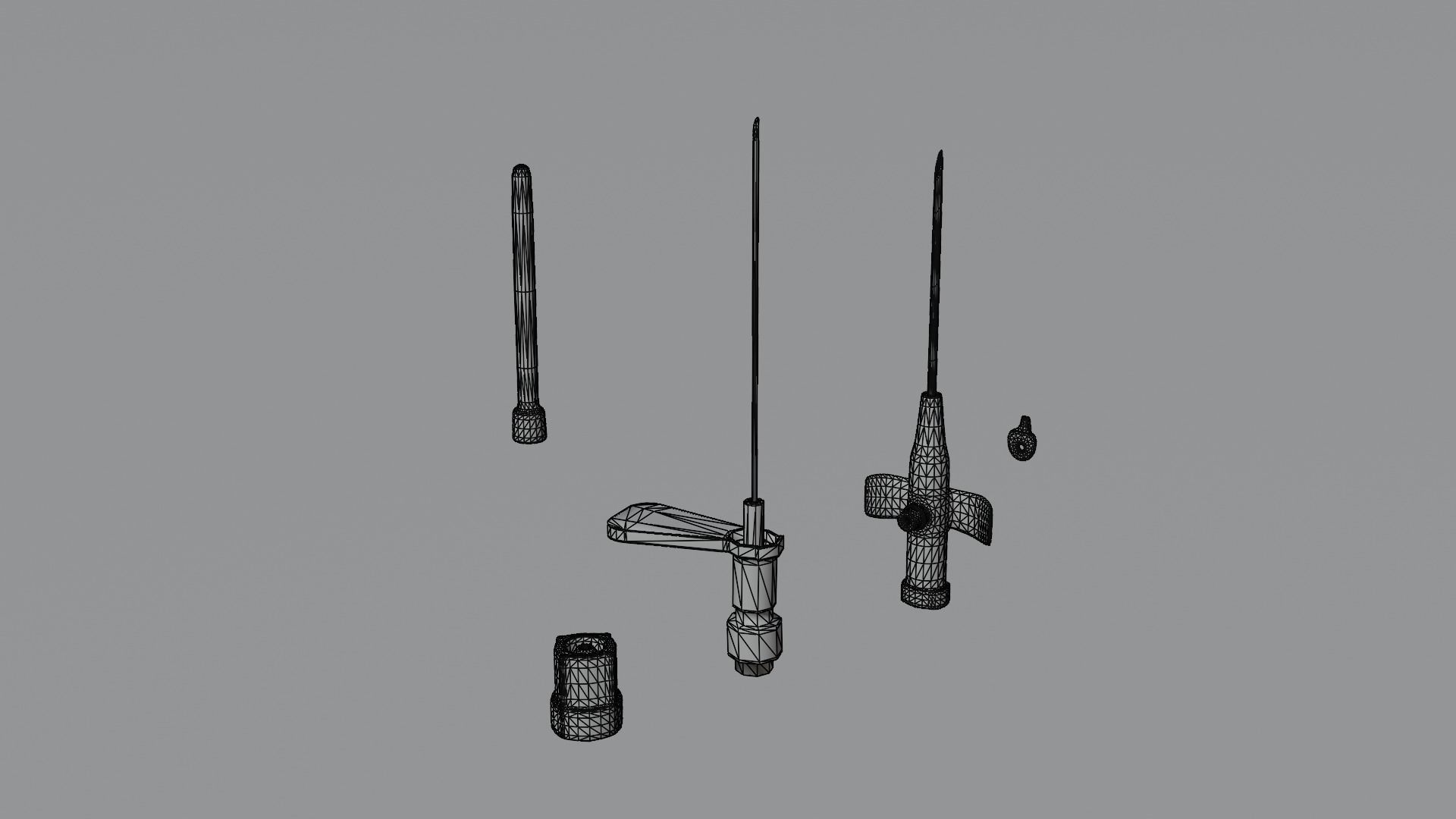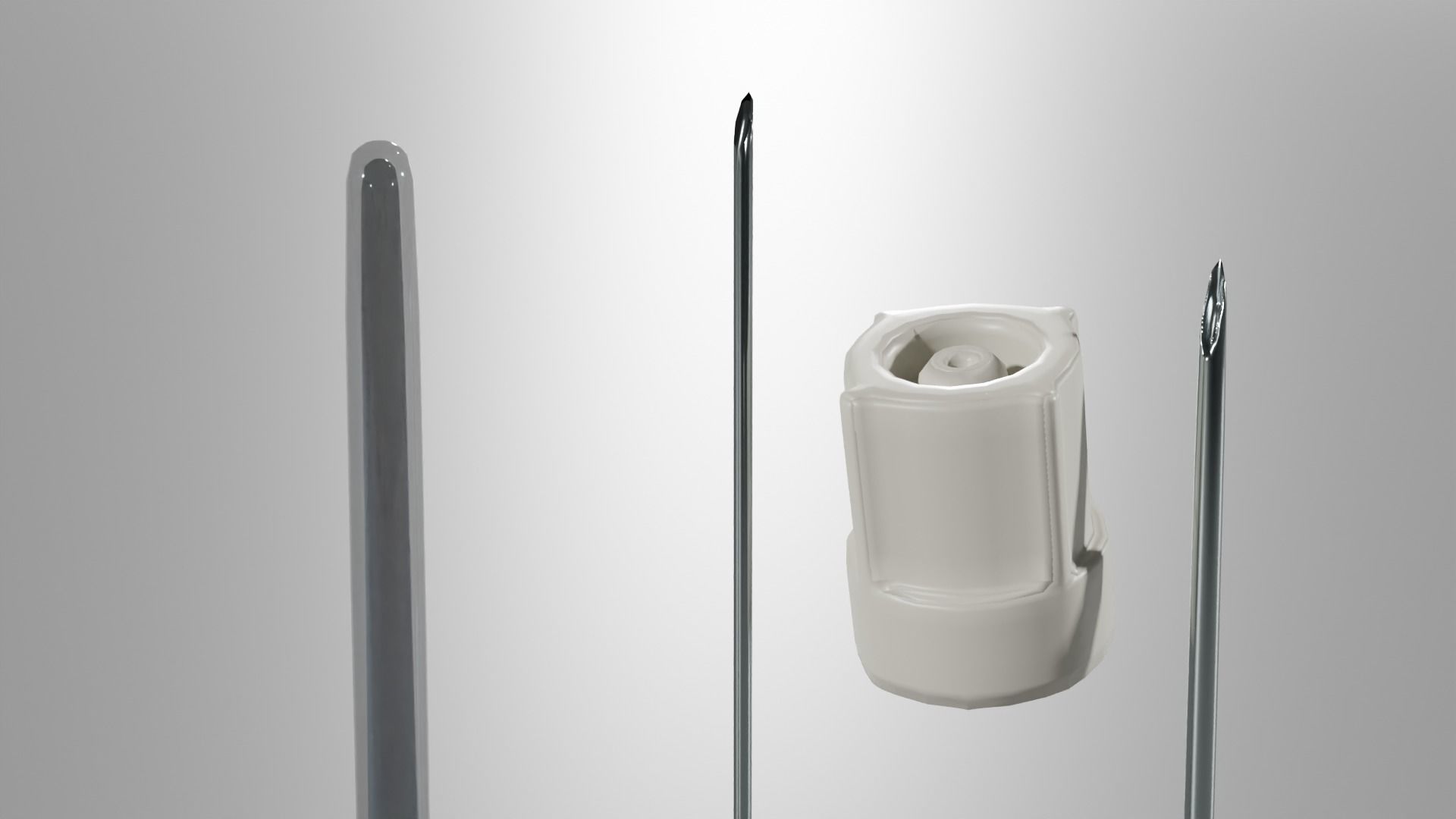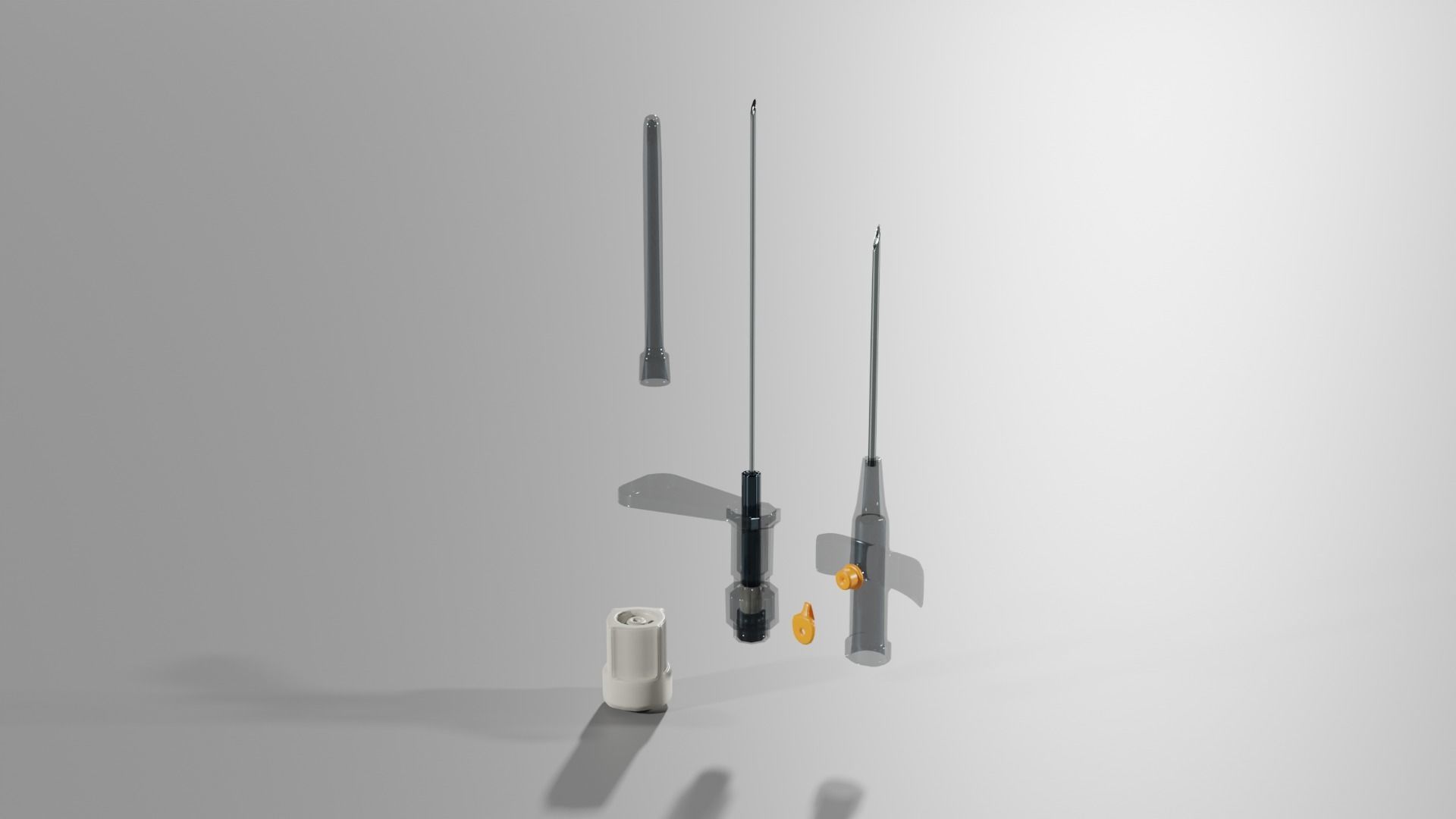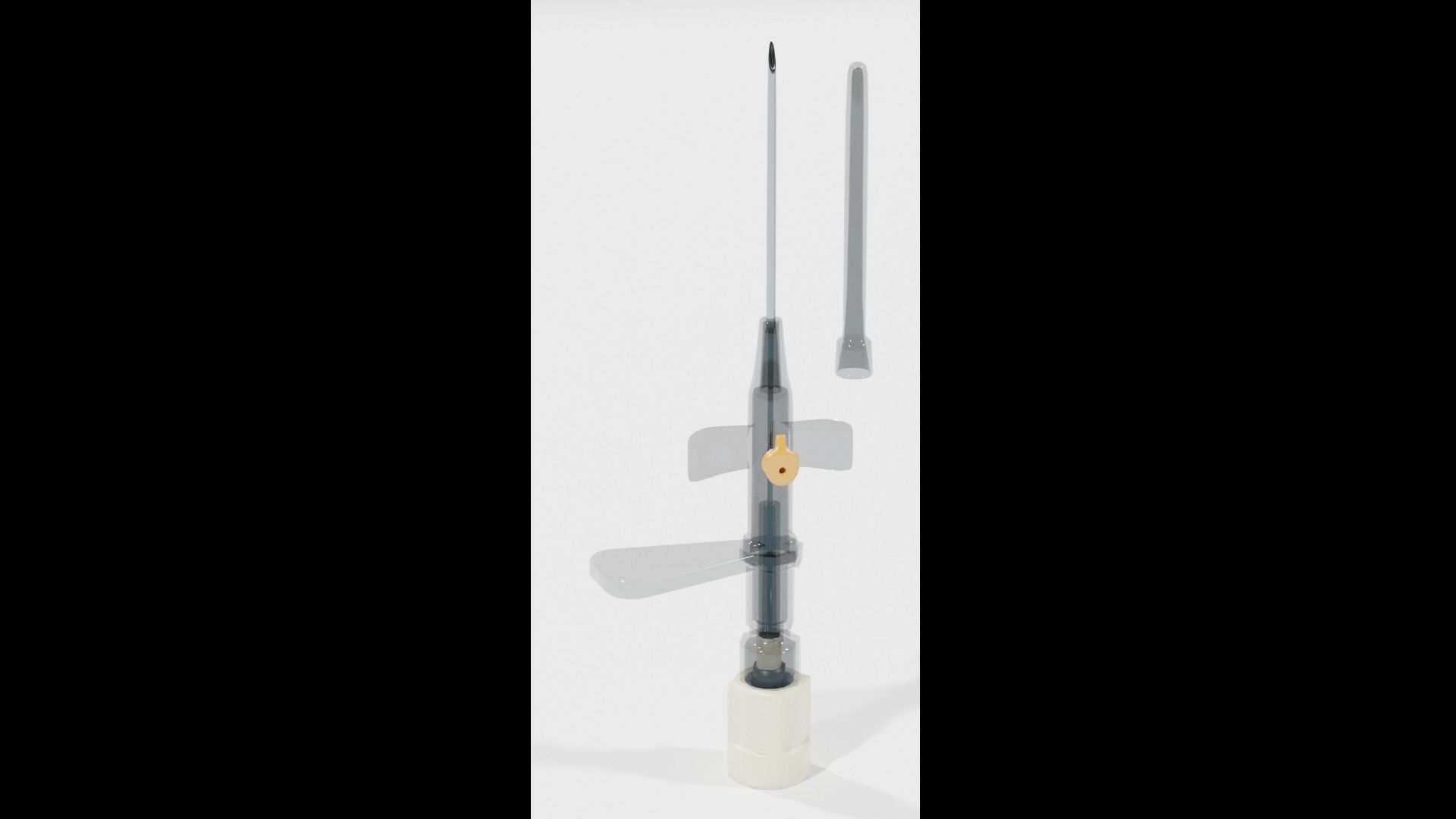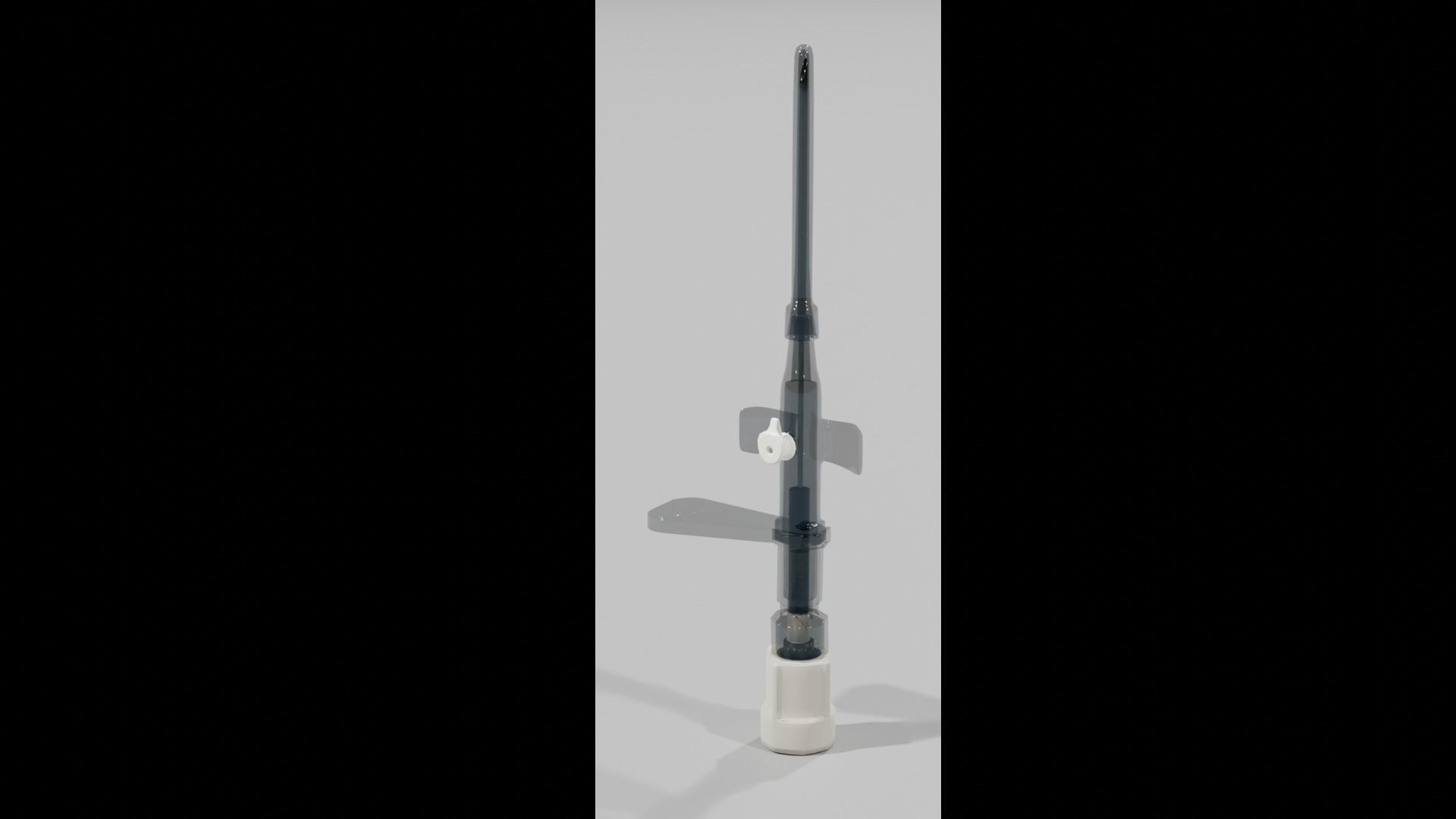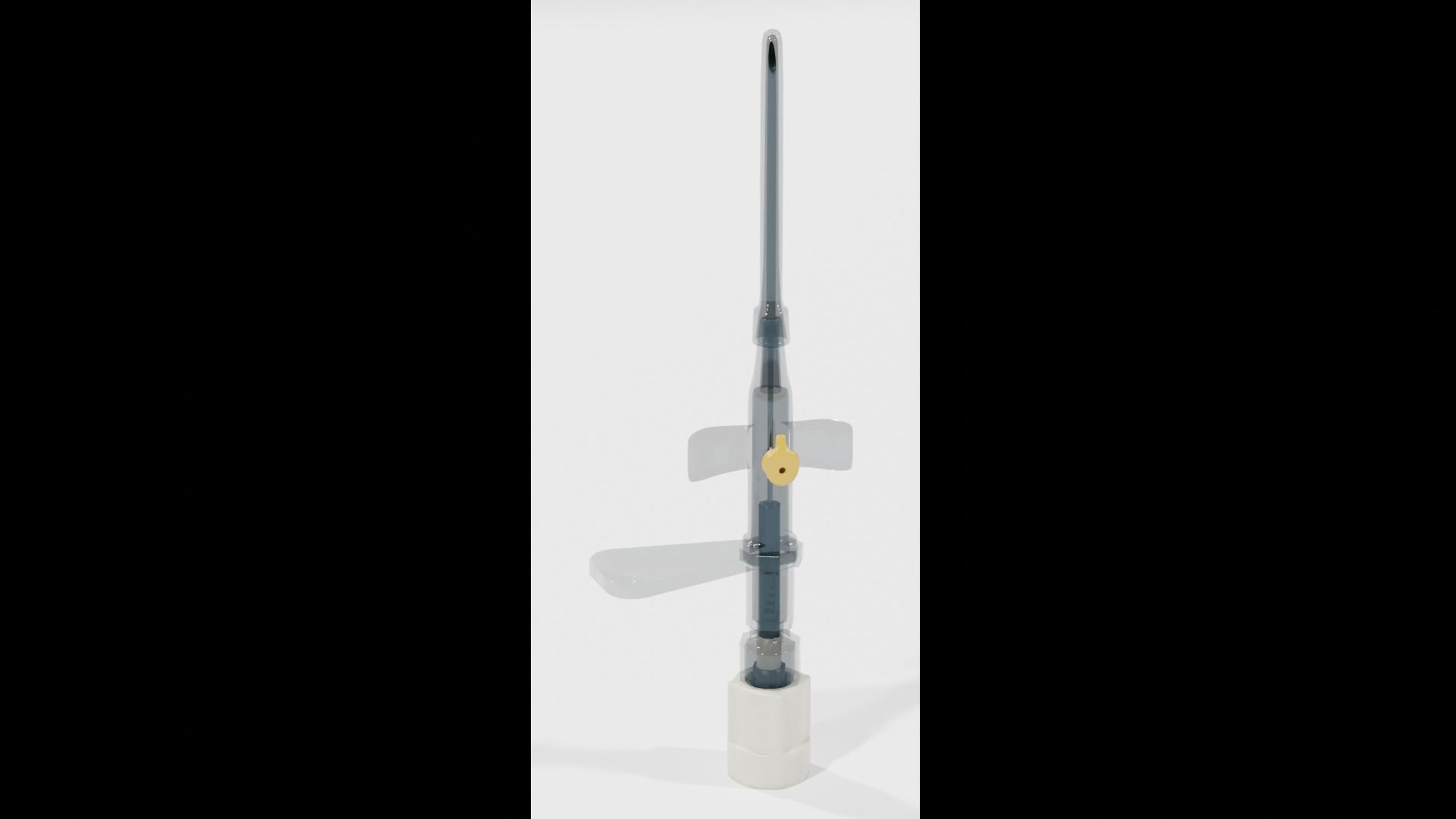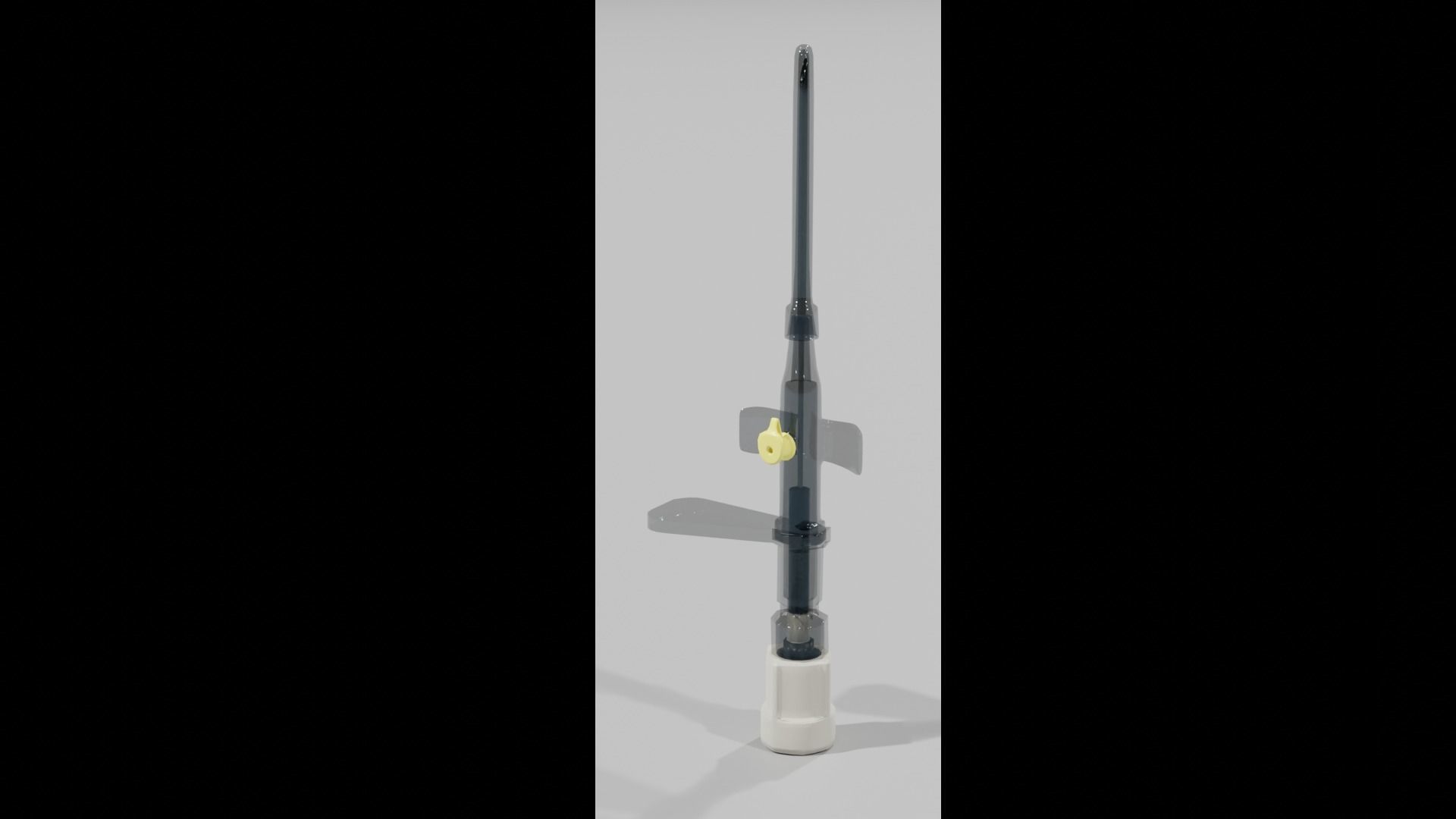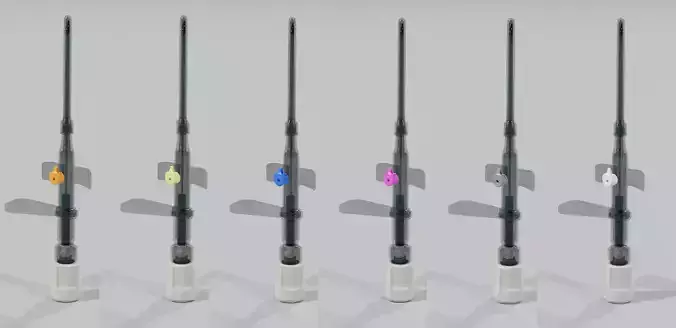
Cannula Low-poly 3D model
High and Low level of detail versions included. Game ready textures, two sets - transparent and opaque. Both HLOD and LLOD use the same texture sets.
An IV cannula, short for intravenous cannula, is a thin, hollow tube typically made of materials like polyurethane or Teflon. Its design is aimed at ease of insertion into a patient's vein, ensuring a secure and painless connection for the administration of fluids and medications. The cannula features a sharp, beveled tip, allowing for smooth penetration of the skin and vein.
Key Features:Wings for Stability: Our IV Cannula is designed with wings for enhanced stability during insertion, ensuring precise placement and minimizing the risk of displacement.Integrated Port: The inclusion of a port adds versatility, allowing simultaneous administration of multiple medications or fluids without the need for additional punctures.Diverse Sizing Options: We understand that healthcare is not one-size-fits-all. Choose from a range of sizes to meet the unique needs of your patients, ensuring optimal performance in various medical scenarios.Color Coding for Ease: Our color-coded IV Cannulas simplify the identification process, making it easy for healthcare professionals to select the appropriate size and gauge, thereby enhancing workflow efficiency.
Intravenous (IV) cannulas come in various sizes and types, each designed to accommodate different medical needs and patient conditions. The size of an IV cannula is typically determined by its gauge (G), and the type refers to the specific design or purpose. Here's an overview of standard IV cannula sizes and types:
I have provided extra diffuse maps for the cap, these are optional. Simply replace the default (Orange) diffuse map with one of your choice from the folder named 'OtherColours_ReplacementDiffuseMaps'.
Cannulas, available in various sizes, play a vital role in medical interventions, ensuring accurate and efficient administration of fluids and medications. These sizes typically range from smaller gauges, such as 24 or 22, to larger ones like 18 or 16, each serving distinct purposes based on patient needs and clinical scenarios.
14G (Orange): This is a larger gauge cannula with a diameter of 2.10 mm, suitable for rapid fluid administration and high flow rates, commonly used in emergencies or critical care.
16G (Medium Grey): Slightly smaller than 14G with a diameter of 1.70 mm, the 16G cannula is versatile and used for various intravenous therapies, providing a good balance between flow rate and patient comfort.
18G (Deep Green): This cannula has a diameter of 1.30 mm and is often used when a slightly smaller size is needed, such as for general fluid administration and medication delivery.
20G (Pink): Smaller in diameter at 1.00 mm, the 20G cannula is commonly used for a wide range of intravenous therapies and is well-suited for patients with more minor or fragile veins.
22G (Deep Blue): With a diameter of 0.85 mm, the 22G cannula is considered a small gauge and is often used for medications, blood transfusions, and other therapies requiring a more delicate approach.
24G (Yellow): This is a tiny gauge cannula with a diameter of 0.70 mm, suitable for situations where a gentle and less invasive approach is necessary, such as in pediatric or geriatric patients.
26G (Violet): The smallest gauge, with a diameter of 0.60 mm, the 26G cannula is ideal for situations where an ultra-fine needle is required, such as in neonatal care or for patients with highly delicate veins.
(www.ivcannula.com)
Any feedback very welcome!


